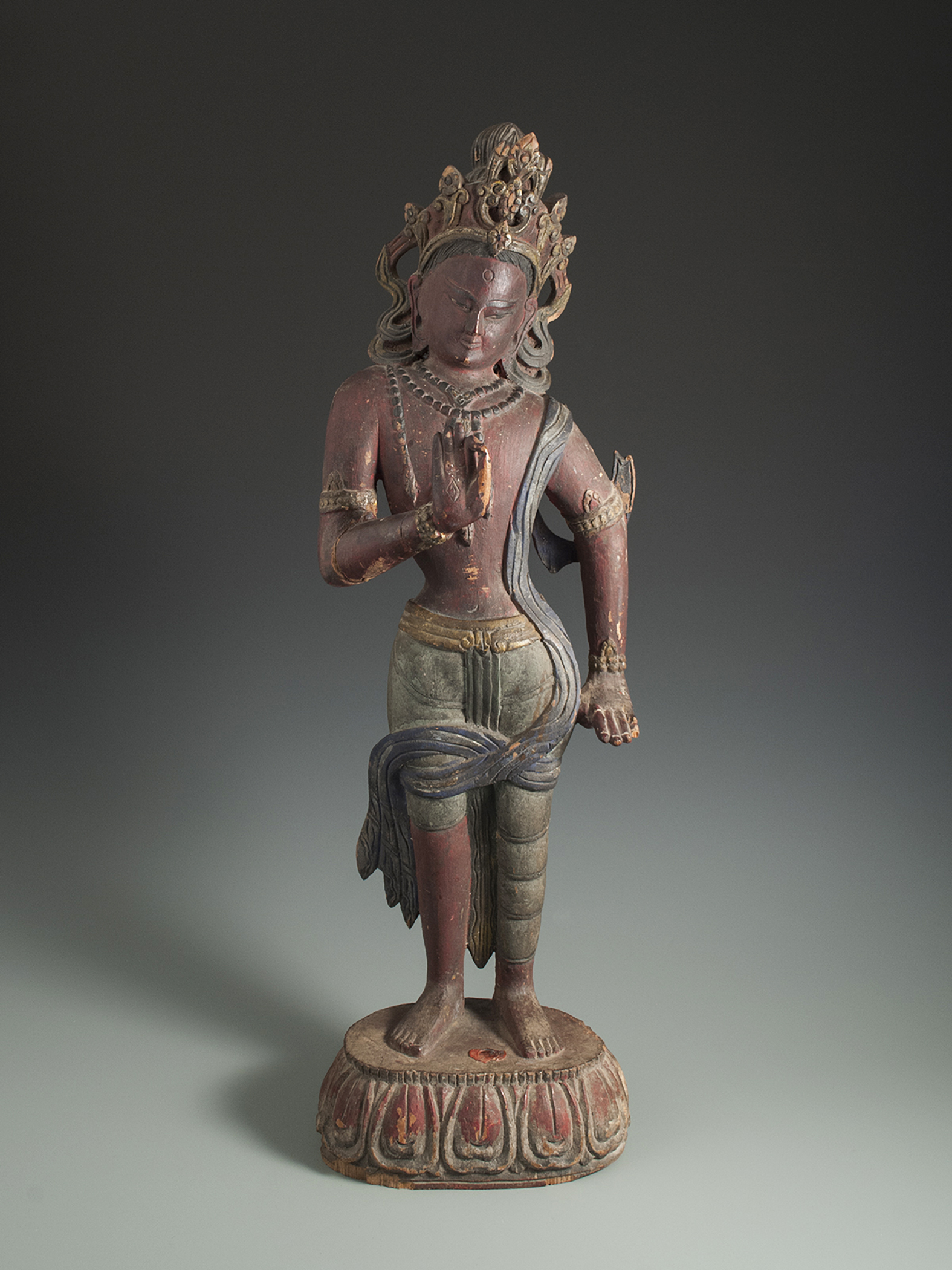Avalokiteshvara Statue
Nepal, 1990

Known by many names in Buddhist and Hindu cultures the world over, Avalokiteshvara is a form of Chenrezig, the many-eyed god of compassion. Chenrezig is a bodhisattva: an individual who is qualified to enter nirvana, but has chosen instead to abide on the Earth, among its billions of imperfect beings, until each of us is liberated from suffering.
In 1996 I had the great good fortune to spend an hour interviewing Tenzin Gyatso, the 14th Dalai Lama, at his home in India. Revered by the Tibetan people, the Dalai Lama is believed to be a direct reincarnation of Chenrezig himself. The subject of our meeting was popular science—especially as it related to Star Trek, which the Dalai Lama, himself an outer space aficionado, had watched gleefully as a young man. Our interview appears in Future Perfect: How Star Trek Conquered Planet Earth. But the book leaves out this anecdote.
After we exchanged greetings, the Dalai Lama and I moved to an L-shaped sofa with a small table at the bend. I placed my pen on the table. As the Dalai Lama sat down, he swept his maroon robe over his shoulder and, accidentally, across the table. The thick cloth sent my pen flying. It hit the floor and rolled under another couch, across from us.
Before I could move or utter a word of protest, the Dalai Lama had leaped off of his couch and onto the floor. His arm and shoulder disappeared under the nearby couch, stirring up a cloud of dust bunnies.
“Your Holiness!” I cried. “Please get up! I’ll get the pen!”
“No, no, no!” he boomed, his head now beneath the couch. “It is my responsibility!”
I learned more about the Dalai Lama in that moment than from any book I’d read. I tried to imagine then-Pope John Paul II in the same situation; it was impossible.
This 19-inch-tall wooden statue of the god of compassion has stood on my bedroom dresser for 30 years. It always reminds me of that moment, and of the meaning of humility.
